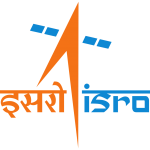January 2019:
The AstroSat Picture of the Month for January 2019 shows the 97 minute long orbit of AstroSat around the Earth. This orbit is roughly equatorial (top right), inclined at around 6 degrees to it (top left). This results in each orbit being slightly displaced from the previous one (bottom).
Picture credit: Leo Jackson John, Operation Director - AstroSat, ISTRAC, ISRO


“AstroSat Picture of the Month” is an initiative of the Public Outreach and Education Committee of the Astronomical Society of India and the AstroSat Training and Outreach Team.
Following the path of our cosmic eye in the sky
When seeing images from AstroSat, have you ever wondered where exactly is the satellite, how does it move, and how do astronomers get their hands on the data? This month's APOM is here to answer those questions for you.
AstroSat was launched by ISRO on 28 September 2015 from Sriharikota, on board the PSLV-C30 into its current orbit. This is a low-earth equatorial orbit, at a height of 650 km above the Earth. This orbit is not exactly over the equator, but is inclined at an angle of about 6 degree to it. In the top left image, the green line marks the equator and the yellow line marks the orbit of AstroSat. The top right image is a view from over the north pole. But why was this orbit chosen?
Our Earth has a magnetic field, which behaves overall like a bar magnet, with its poles a few degrees away from the poles defined by our rotation. These magnetic fields trap charged particles within them, which form the Van Allen belts. These belts are much closer to the Earth over the southern Atlantic Ocean. An equatorial orbit reduces the effect of this South Atlantic Anomaly on AstroSat which carries very sensitive instruments. Making the inclination exactly zero requires more resources and hence a 6 degree inclination was chosen.
AstroSat takes about 97 minutes to orbit the Earth once. Hence, it will not pass directly overhead at the same point in successive orbits. Each orbit, therefore, will be slightly shifted with respect to the previous one. You can track the movement of AstroSat live on this page. The individual orbits shown in red in the bottom image represent orbits that are one week apart, clearly showing this drift. Data is beamed down from an antenna on the satellite once every orbit, when it passes near India. This is received by ISRO's antenna in Byalalu near Bengaluru (marked as BLR). All orbits of AstroSat fall within the visibility of this antenna, which is marked by a circle centred at Byalalu. ISRO can also use an antenna in Indonesia, marked BIK, to monitor the satellite when needed. All the command, control and tracking of AstroSat is done by ISTRAC in Bengaluru.
As of 30 January 2019, AstroSat has completed 18000 orbits around the Earth, acting as our high energy eye, uncovering the nature of neutron stars, black holes, hot stars, and many strange celestial objects. May it continue to do so for many more orbits!
Click here for the entire APOM archive
More about ASTROSAT
AstroSat, India's first dedicated multi-wavelength space observatory, was launched by ISRO on 28 September, 2015. It has five instruments on board – the Ultra Violet Imaging Telescope, the Soft X-ray Telescope, the Large Area X-ray Proportional Counter, the Cadmium-Zinc-Telluride Imager and the Scanning Sky Monitor.
Get answers to your common queries about ASTROSAT in English, in हिंदी, and in मराठी.

